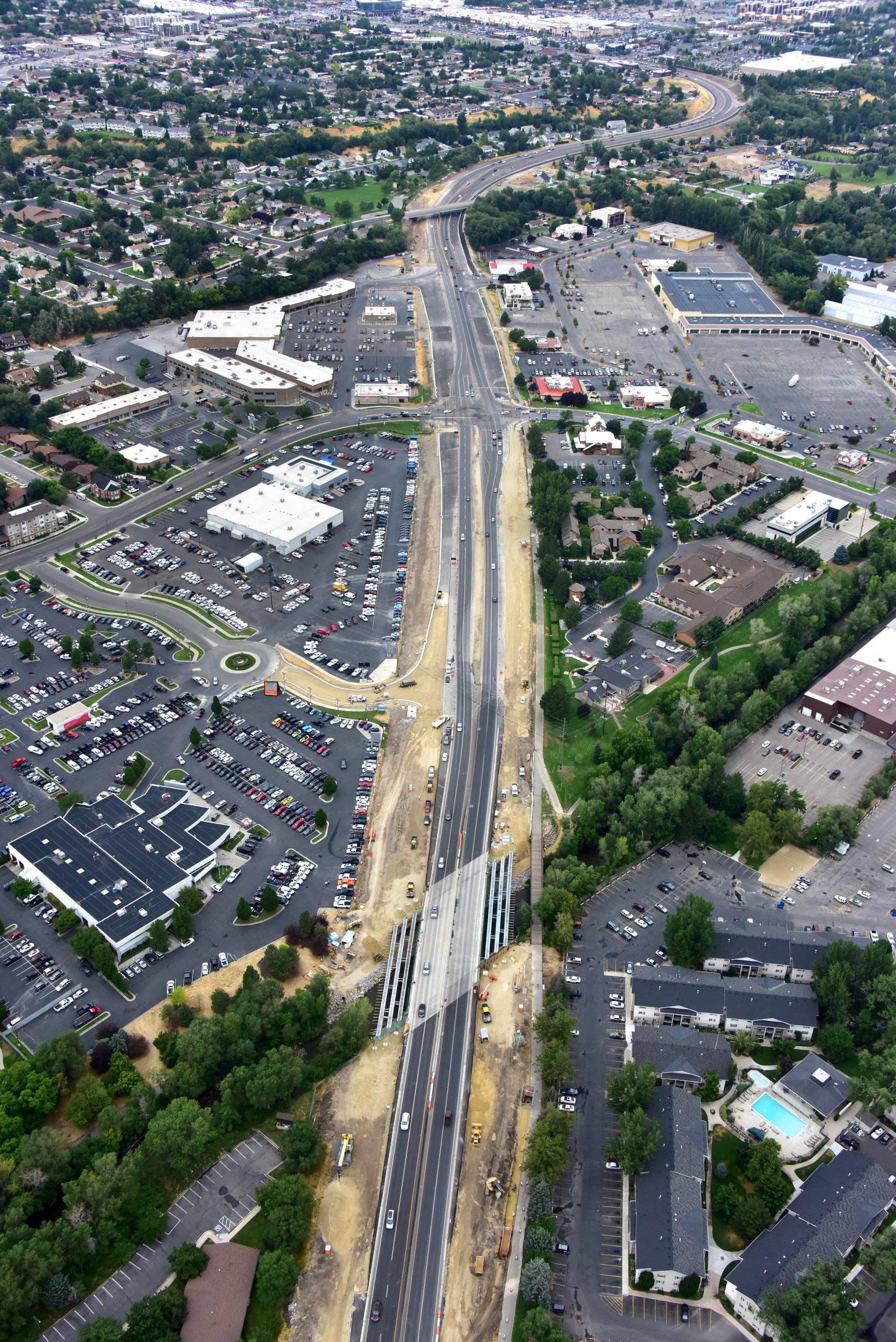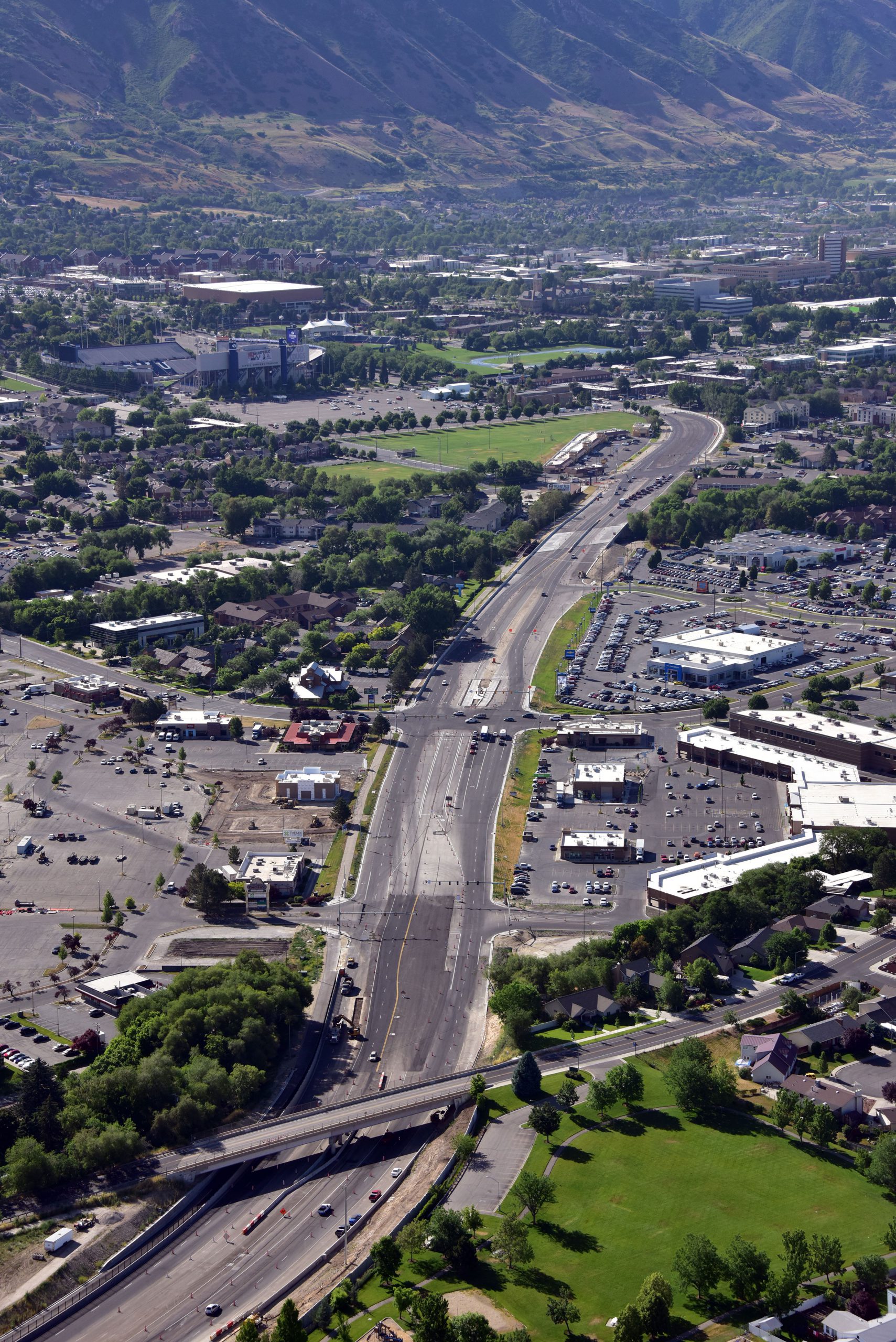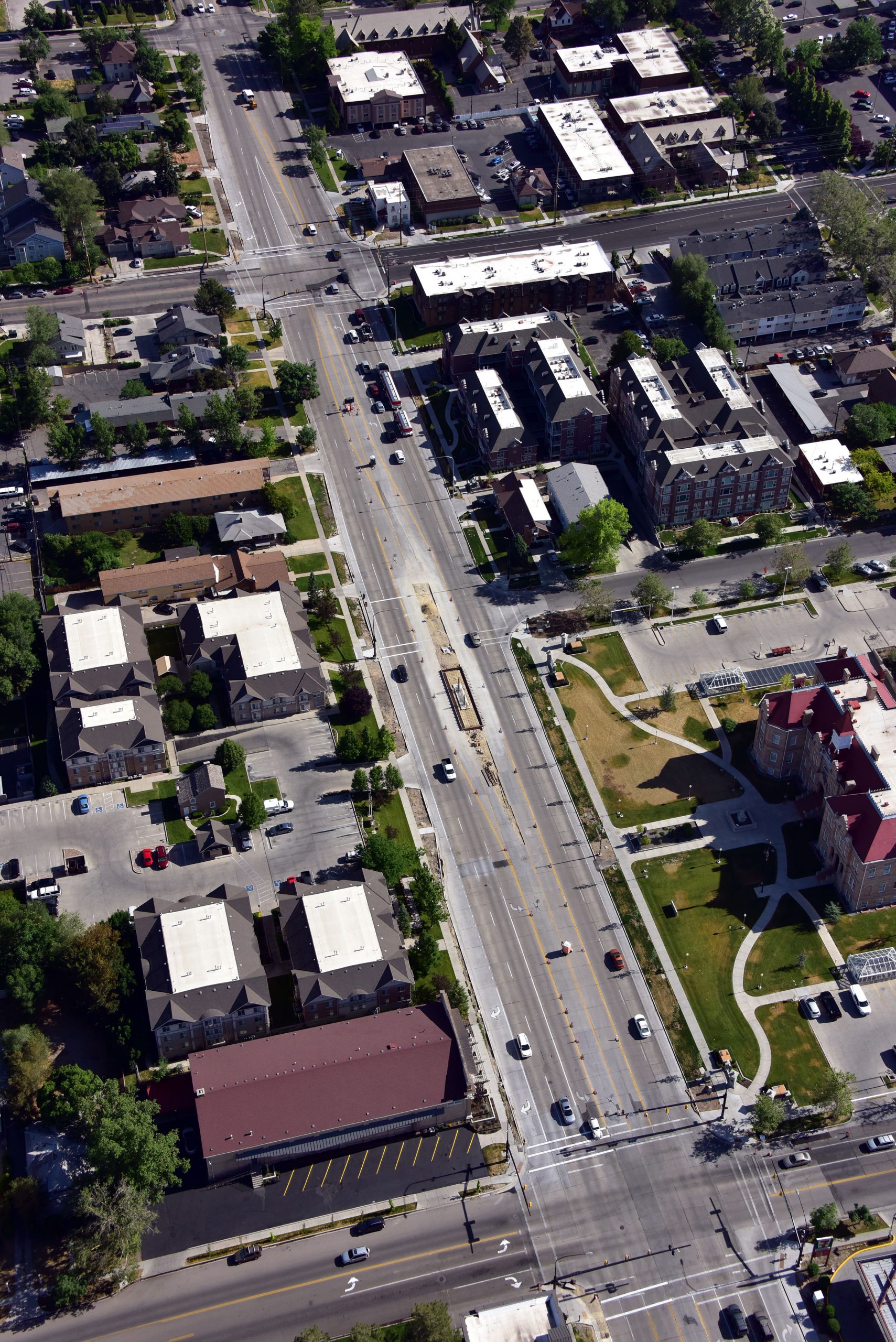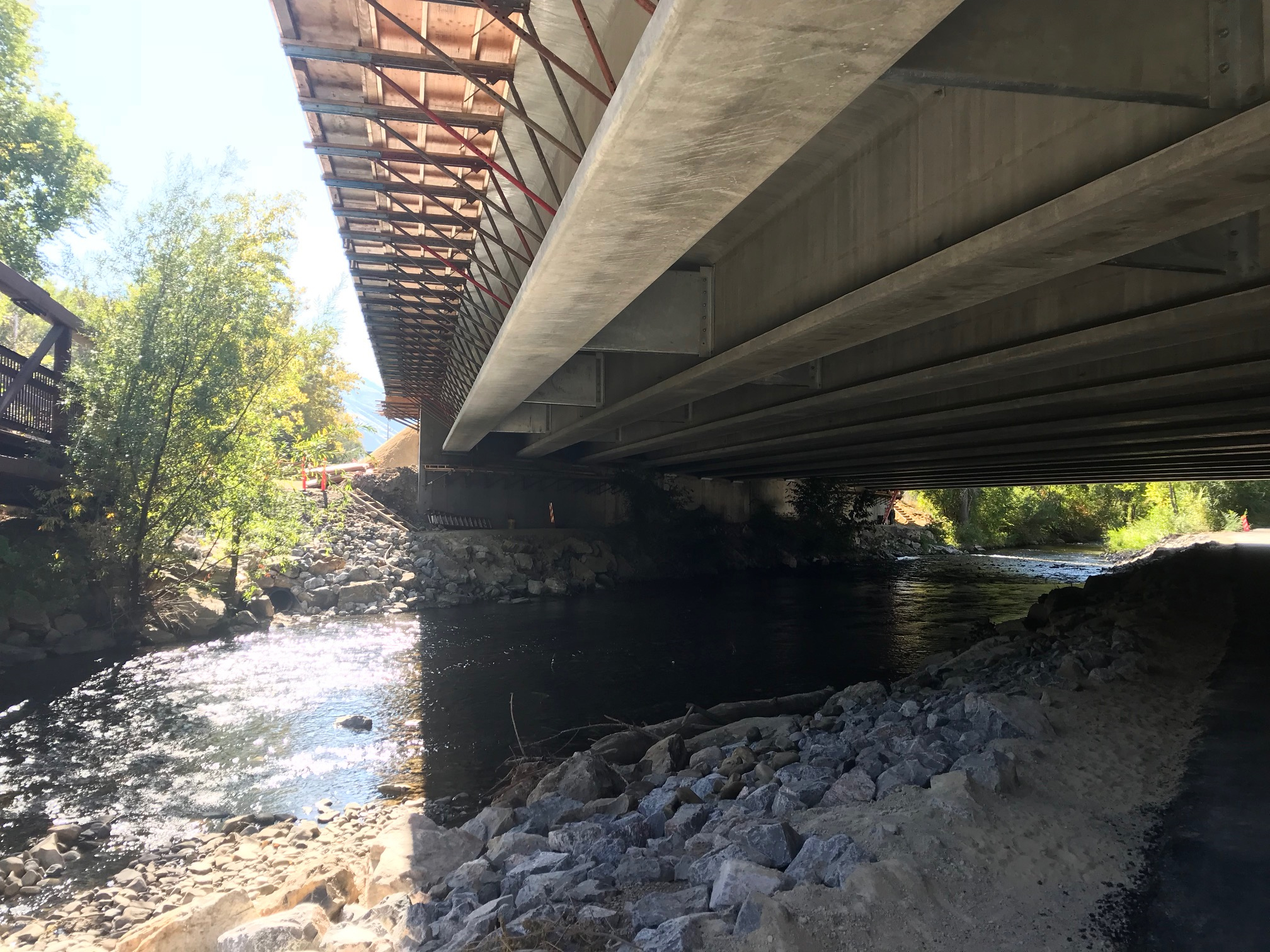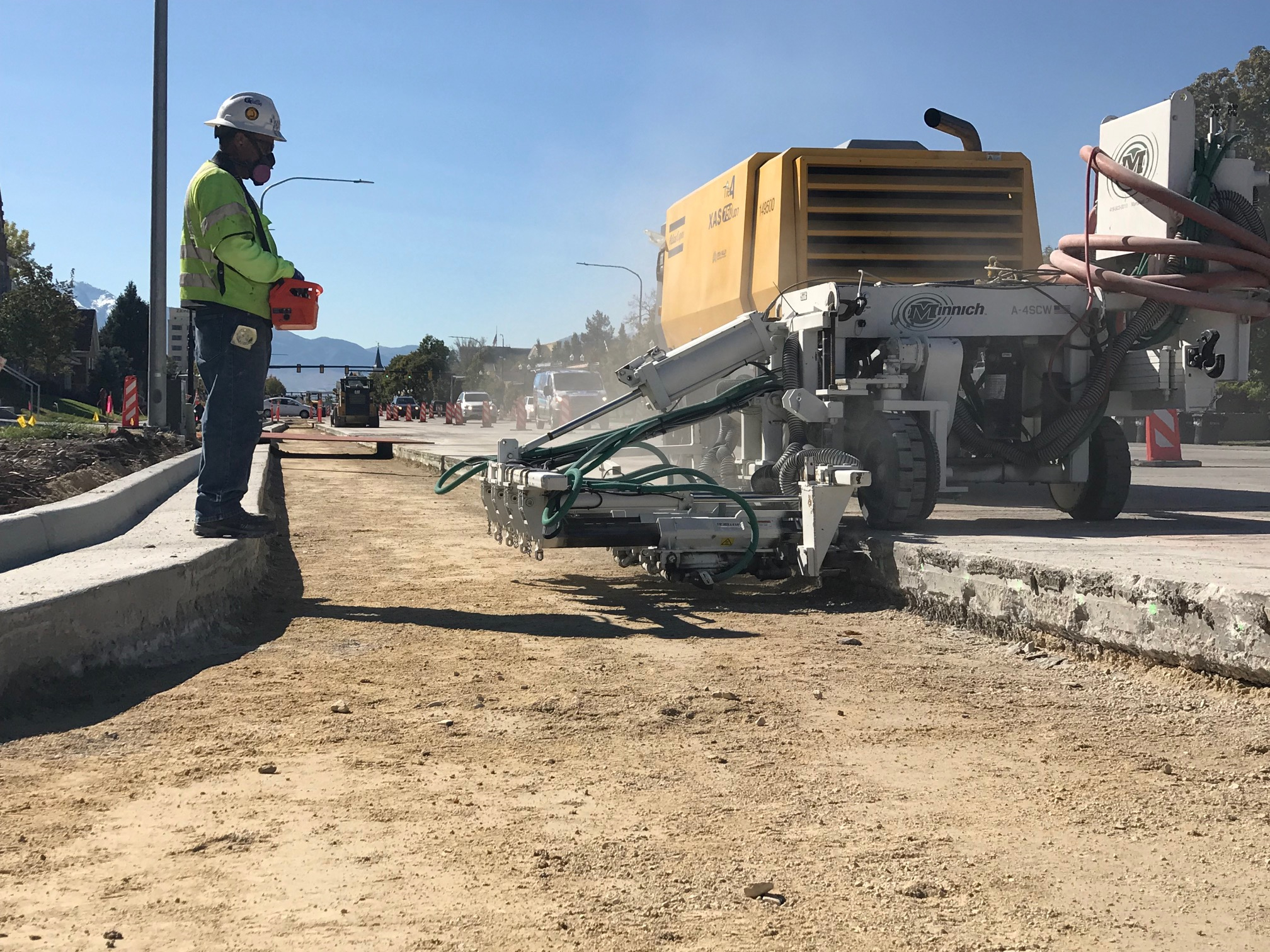Provo-Orem Transportation Improvement
Provo and Orem, Utah
This CM/GC project included 11.2 miles of roadway, stations, and transit improvements, as well as sidewalk, intersection and intermodal facility upgrades. The majority of the project incorporated dedicated BRT lanes in the center of state highways and arterial streets. New Flyer Xcelsior 60-ft. articulated buses—powered by clean-air diesel-electric hybrid motors—connect riders to universities, major employment centers, shopping malls, and downtown. The scope included 21 stations that accommodate level boarding, signal prioritization technology, platform canopies, seating, and off-board fare collection. Kiewit was the joint venture lead responsible for pre-construction services and construction execution. The Team successfully minimized impacts to project stakeholders, including Provo City, the City of Orem, Utah County, Utah Valley University, BYU, local businesses, and the public. Project impacts included utility service interruptions, property access closures, parking and MOT, night work, Right-of-Way (ROW) acquisitions/easements, and landscaping. Extensive efforts were made to meet with stakeholders prior to impacts to review design and construction needs and gain feedback on timing and ways to minimize impacts. The team supported business outreach methods by participating in business marketing committee meetings, producing content for the “Shop On” business promotion campaign, and attending bi-weekly business meetings. The congested corridor required coordination with 19 separate utility owners to relocate $18 million in utilities. Our successful utility relocation plan allowed utilities to be relocated on time without delaying the schedule. The team coordinated with five other contractors working concurrently on adjacent roadway improvements, apartment developments, and building expansions. Kiewit held pre-construction meetings with the contractors to understand work areas and coordinate schedules, access, and impacts to stakeholders. During construction, Kiewit met with the contractors weekly to review these same items. The Kiewit Team conducted strategy meetings during pre-construction to improve the design and reduce costs. These meetings resulted in more than $6M in savings. For example, the team reduced cost by using different types of walls, including MSE block walls and cast-in-place (CIP) walls. To satisfy demands of the project, Kiewit selected staff with strengths in working with UTA, transit and roadway projects, traffic control, local third-party agencies, and CM/GC procurement.
